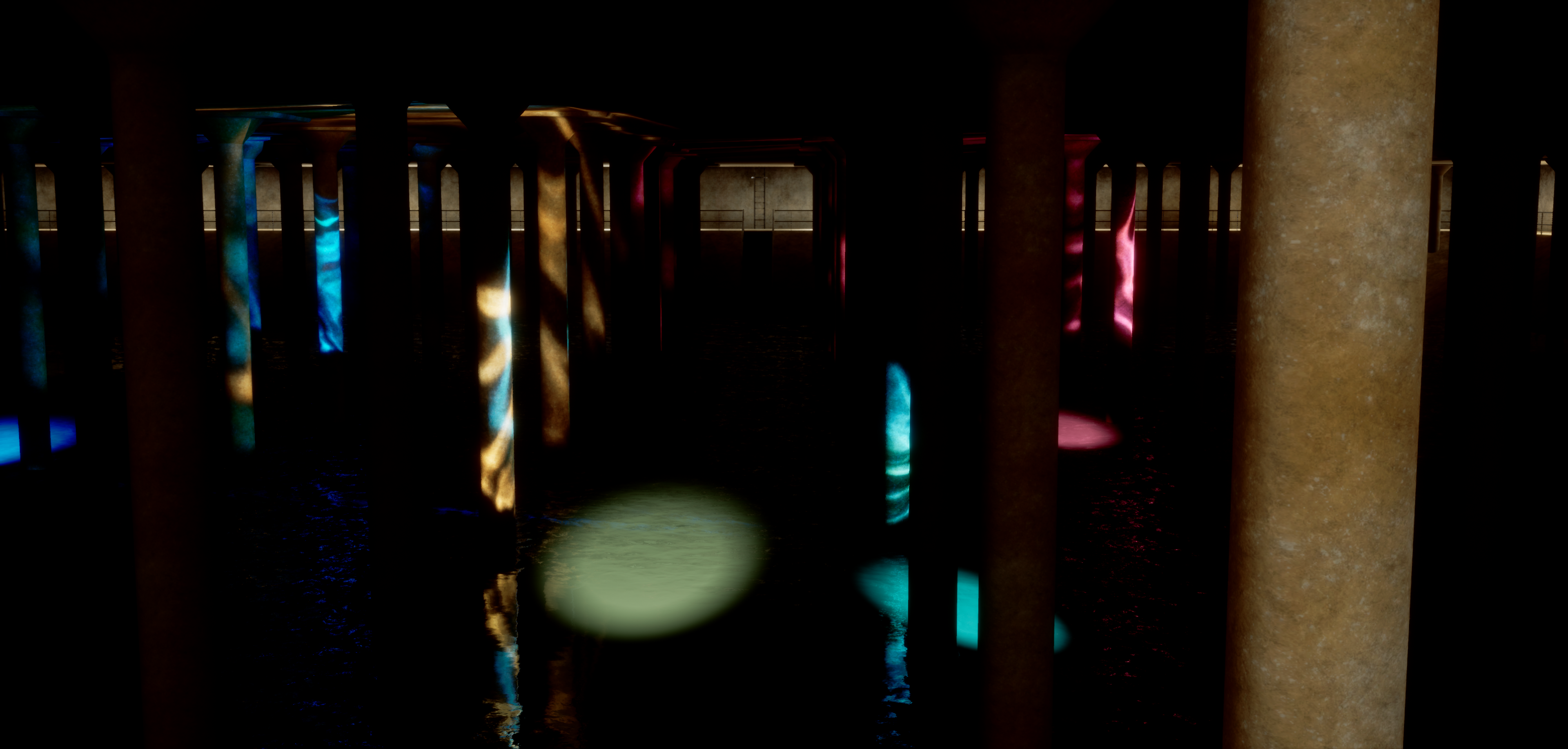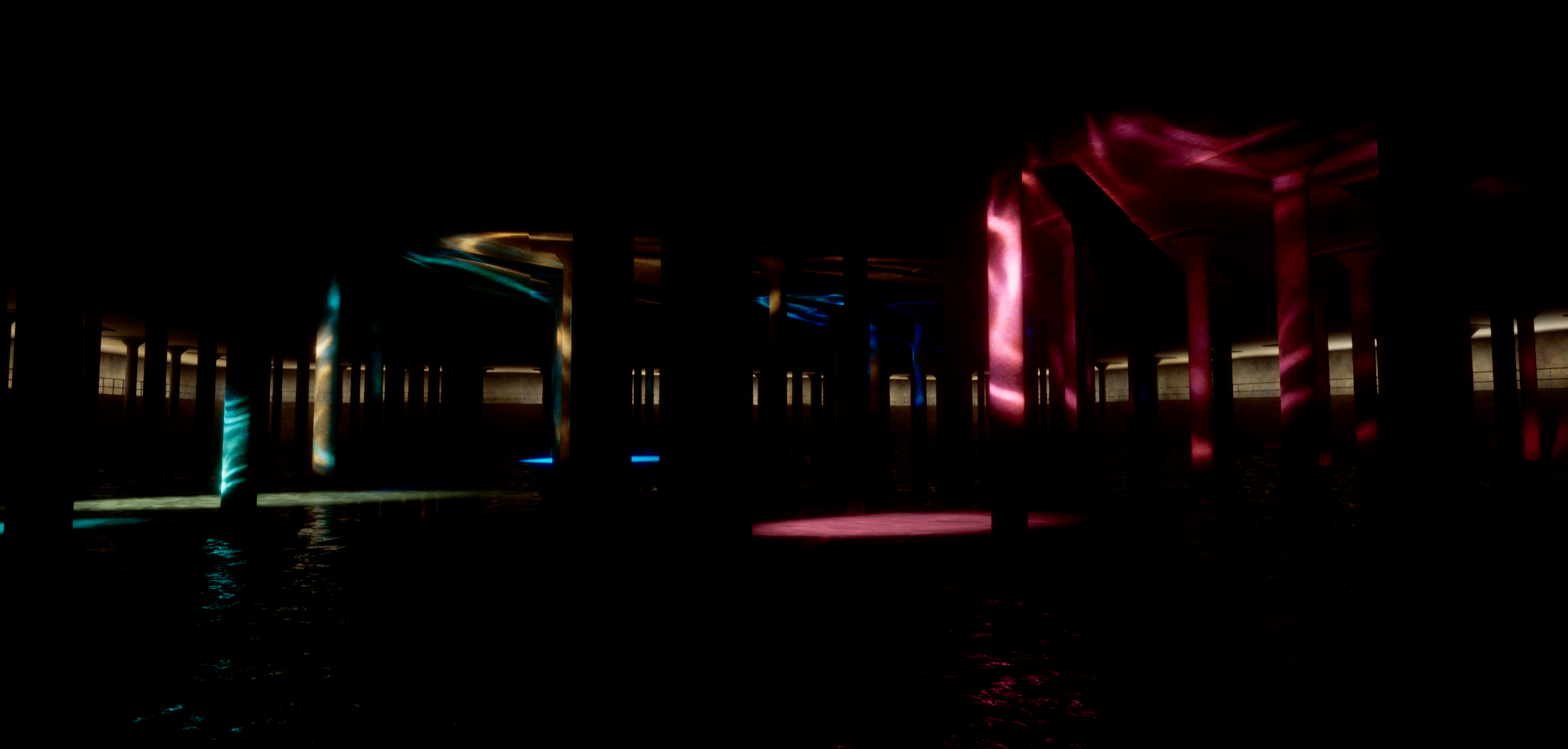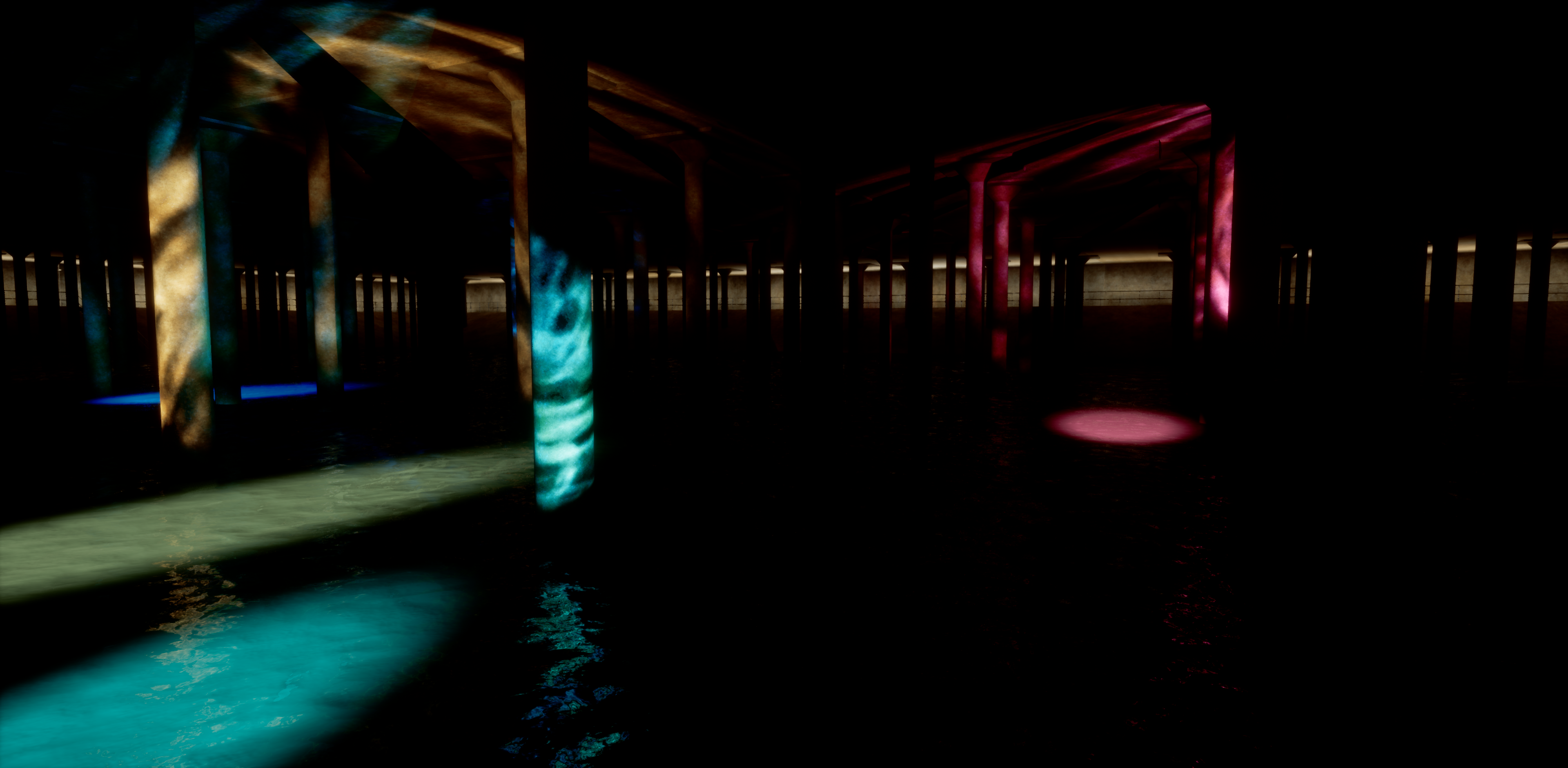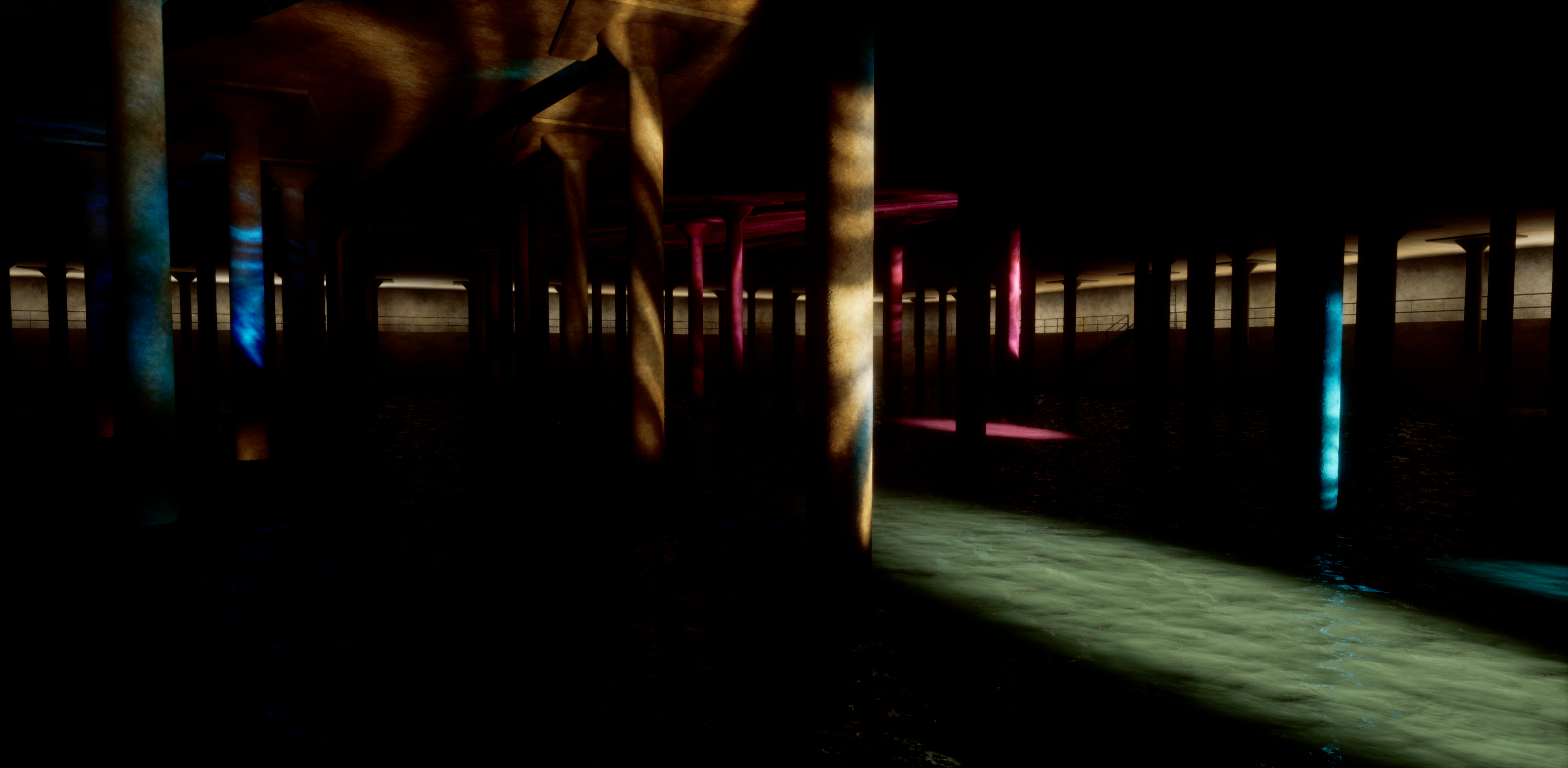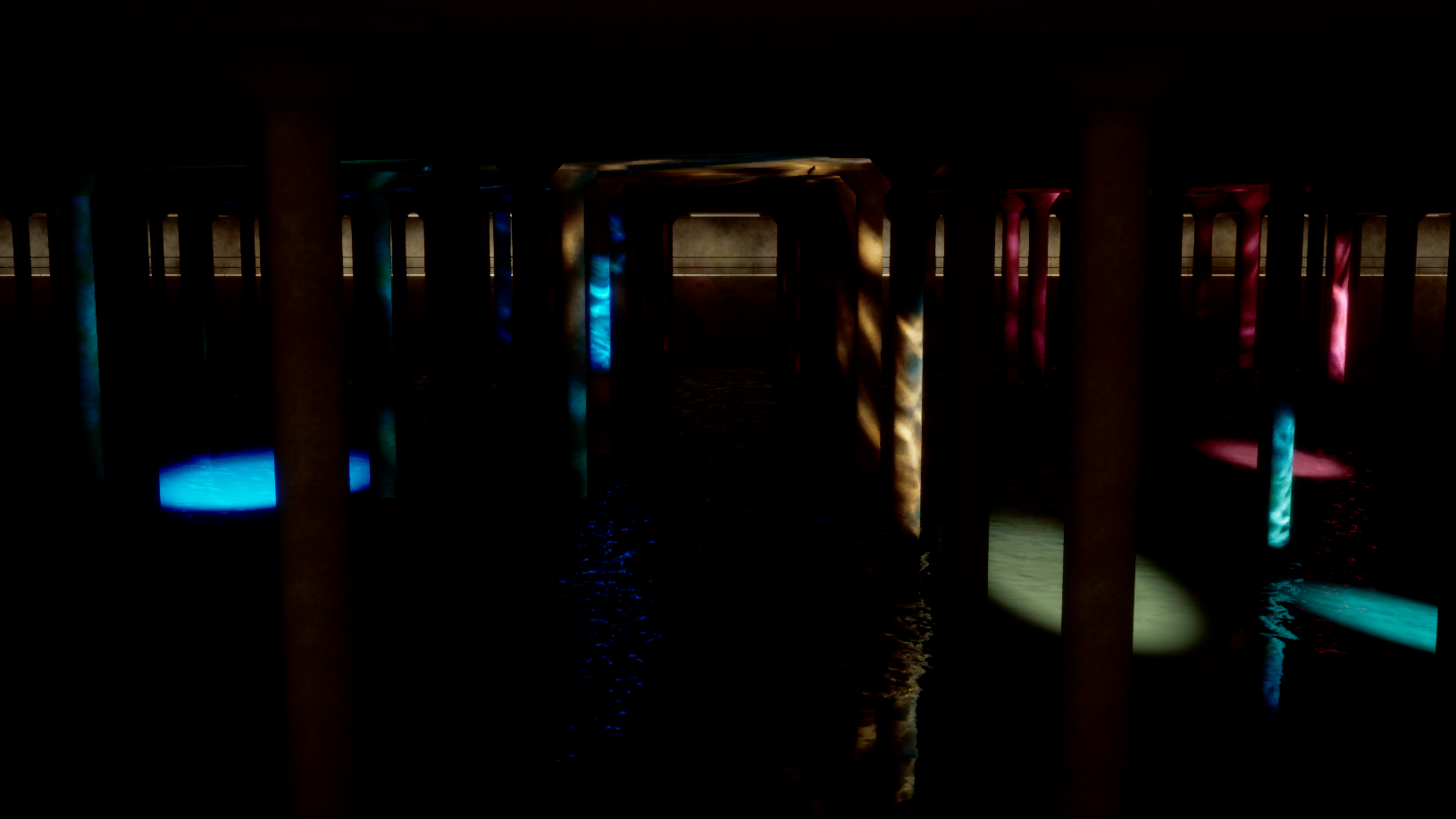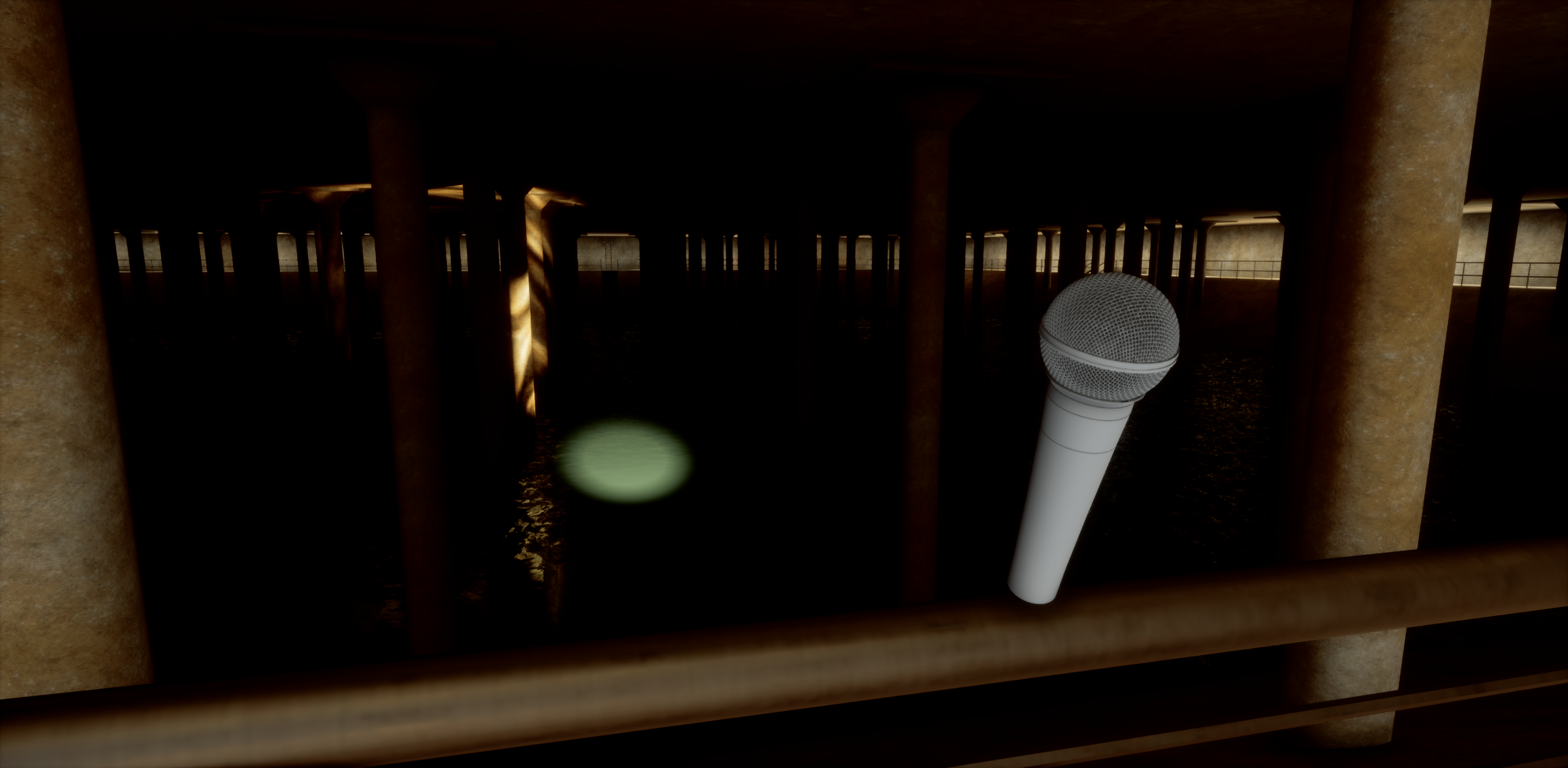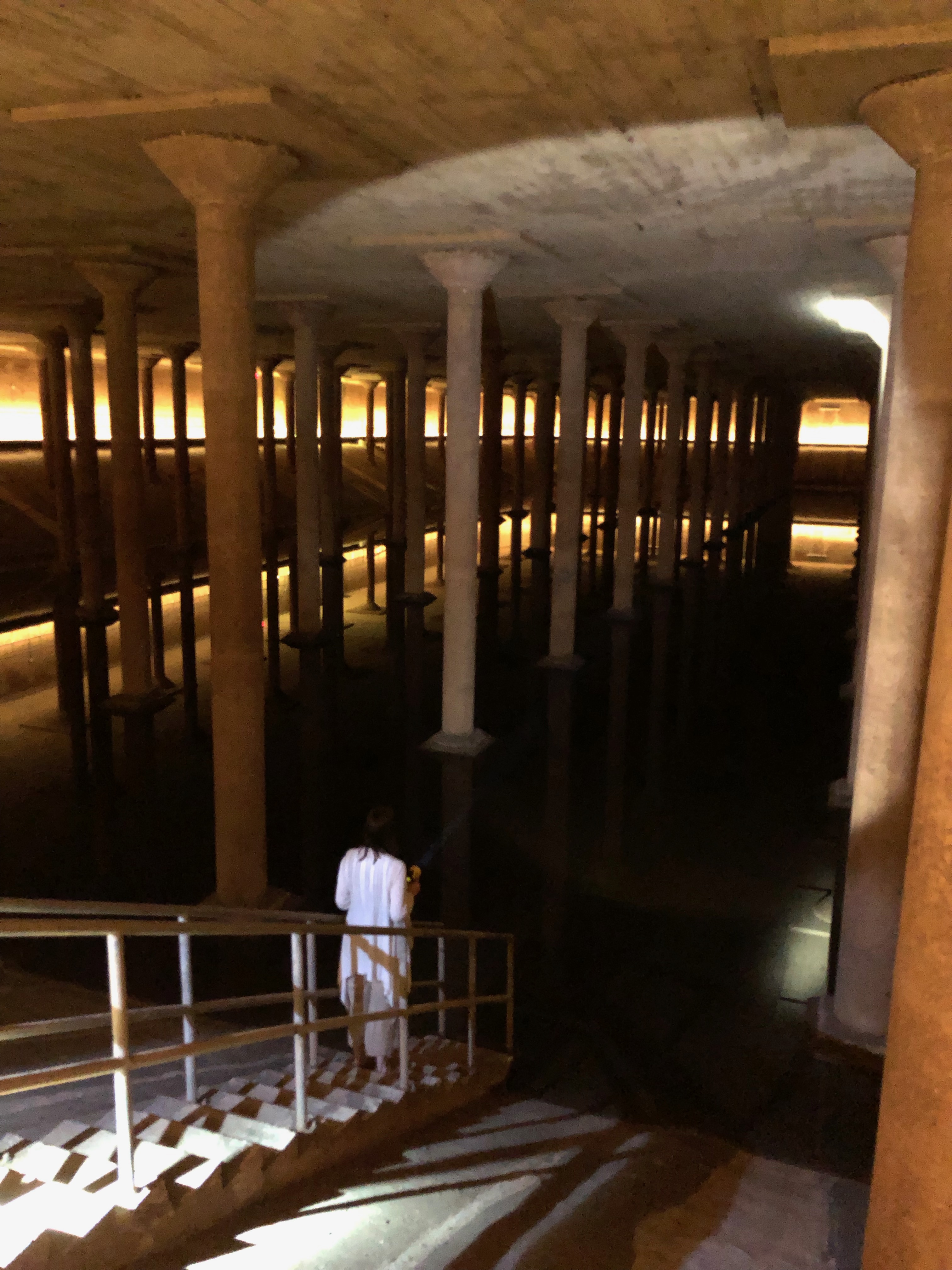Camille was one of a short list of artists invited to submit a proposal for the Buffalo Bayou Park Cistern in Houston, Texas, for a project to be realized in the fall of 2020. The Cistern was built as the City of Houston’s underground drinking water reservoir in 1926 and repurposed as a public space for changing art installations in 2016.The space is an 87,500-square-foot underground concrete expanse with 221, 25-foot tall concrete columns. Previously commissioned artists include Magdalena Fernández and Carlos Cruz-Diez.
Concept Overview:
Utterback’s proposal, Reservoir, is a dynamically generated light and audio artwork that will transport visitors to the Buffalo Bayou Cistern into an ethereal space of luminous colored ripples, where they will experience an audio composition of Houston residents speaking about their sources of strength and perseverance. The artwork transforms the city’s former shared public water reservoir to a communal and metaphorical “reservoir of strength.”
While water is vital to our physical survival, emotional resilience and strength are equally vital to human endurance. The people of Houston, one of America’s most diverse cities, have many stories to share about how they have persevered despite difficult odds. At a time of political turmoil in our country, these personal stories of Houstonian’s strength, will offer hope that as a community as a whole, we have the emotional and spiritual strength to persevere.
Experience:
Visitors enter the Cistern with only the dim walkway lighting guiding them. Soon they hear a woman’s voice in the darkness describing why she needed strength in a difficult situation, and how she found it.
As the voice grows louder a warm colored light begins to shine into the nearby cistern water which also starts to ripple in concert with the speaker’s voice. As the light gets brighter, undulating reflections bouncing off the undulating water are cast up onto the nearby columns, creating mysterious golden ripples across the columns.
As the woman’s story continues, the pool of light from the spotlight grows larger, and slowly moves deeper into the center of the cistern to create more and more reflected ripples throughout the columns. The increasing ripple reflections parallel the increasing reverberations of the woman’s story as it begins to echo throughout the space.
Soon another voice is heard further down the walkway and a differently colored light appears on the water near this voice. The paired light and audio tempt people to begin moving towards these new sources of light and sound. The new light and differently colored ripples build and grow to reflect a different person’s story, why they needed strength, and how they found it.
One by one, more voices, more stories of finding strength, and more ripples are added to the sonic and visual composition. As visitors begin wandering about the space to explore, they hear different stories as they enter the range of the speakers associated with each story.
At moments, the voices might falter or describe moments of despair, plunging the Cistern—or some small portion of it—back into darkness. Ultimately, there is a chorus of victorious voices reverberating in the Cistern (“I made it”, “I couldn’t have done it without her, but we got through it together”, “I’m still sober, one day at a time”, “I realized the most important thing is my family” “I found my strength” etc.), and layers upon layers of colored ripples fill the space in a richly colored visual crescendo.
After this climax, the lights and colored ripples dramatically fade back out and viewers find themselves in complete darkness. A voice asks, “Why do you need strength? How will you find it?” New lights along the walkway railing fade up, highlighting microphones at various points along the railing.
Visitors are now invited speak into the microphones, creating their own flickering light and ripples throughout the space based on their own voices. For people who are too shy to speak into the microphones, a text-based account or feed will be provided to upload their answers. One microphone might be reserved for people who prefer to read the text inputs of others. Voicing out loud the strength of others is a powerful way to embody the strength of these strangers.
Seeing one’s own and other’s voices of strength amplified as glowing ripples-which multiply and reflect in seeming infinity across the cavernous cistern space-will create a sense of spaciousness and possibility for participants. The expansive feeling inspired by the voices and visuals of the Reservoir artwork, will itself become a new source of strength for visitors.
Spotlight and Water Ripple Visuals:
The spotlights in the artwork are computer controlled “moving head lights” similar to those used in concert venues. These LED fixtures can be directed by DMX show control software to point to any location within the space, narrow or widen their beams, and change colors dynamically.
The ripples in the cistern water will be created by small electro-mechanical devices that “tap” the water (actuators), or valves that release water droplets onto the water (solenoids). Off-the-shelf computer controlled actuators, and solenoids are widely available and will be controlled to tap or drop onto the water in frequencies or amplitudes from the spoken audio files. Underwater speakers may also be explored as an alternative for ripple generation.
During her site visit, Camille conducted a proof of concept test showing the potential of a spotlight to create numerous ripples across the cistern columns. A multi-colored light prototype set up in the artist’s studio showed the potential of multi-colored reflections to layer together.
Audio Composition & Collaboration:
To collect the audio for this work, Camille will partner with local organizations who can connect her to Houstonians interested in describing their sources of strength. The goal will be to collect stories representing the diversity of Houston’s population, potentially including stories in multiple languages.
As a component of the project, Camille will seek a local library interested in archiving the collection of stories for the public to access in perpetuity. The collection could also potentially be housed with the Library of Congress via their Story Core oral history program.
Camille will collaborate with Stanford colleague Jonathan Abel, a consulting professor at the Center for Computer Research in Music and Acoustics (CCRMA) and his CCRMA PhD students, to build a dimensional audio model of the Cistern, and design the spatialized audio composition. Abel’s and these students’ research and expertise on spatialized audio simulation will allow Camille to prototype and simulate what her audio composition would sound like as sound emanates from one of the 32 speakers in the Cistern and reverberates through the space (which has a 17 second echo). Additional tools developed by CCRMA will be employed to do real time feedback cancellation on the live audience audio input component of the piece.
Jonathan’s understanding of the spatial properties of sound waves (which behave similarly to ripples in water), will also allow us to calculate and plan additional visual effects with the water ripples, such as timing the ripple frequencies to create standing waves, or specific interference patterns, in the water which relate to the audio composition. Water ripples will be composed to build up or decay in ways that relate to the feeling in different moments of the composition. Similarly, audio decay in the composition could be emphasized or de-emphasized to match the generated ripples.
While the composition will be primarily spoken words in a range of human voices, some musical or other sonic properties may also be included to add emphasis to the composition.
